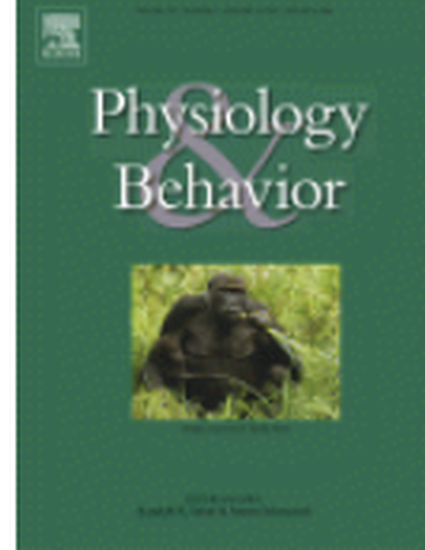
Article
Relationships between early experience to dietary diversity, acceptance of novel flavors, and open field behavior in sheep
Physiology & Behavior
(2012)
Abstract
This study determined whether early experiences by sheep to monotonous or diverse diets influence: (1) plasmatic profiles of cortisol, a hormone involved in stress responses by mammals, before and after an ACTH challenge, (2) the readiness to eat new foods in a new environment, (3) general fearfulness and response to separation – as measured by the open field test (OFT) and stress induced hyperthermia (SIH) – and (4) the link between (2) and (3). Thirty, 2-mo-old lambs were randomly assigned to 3 treatments (10 lambs/treatment). Lambs in one treatment (Diversity — DV) received in successive periods of exposure all possible 4-way choice combinations of 2 foods high in energy and 2 foods high in protein from an array of 6 foods: 3 high in energy (beet pulp, oat grain, and a mix of grape pomace:milo [40:60]) and 3 high in protein (soybean meal, alfalfa, corn gluten meal). Lambs in another treatment (DV+T) received the same exposure described for DV but two phytochemicals, oxalic acid (1.5%) and quebracho tannins (10%) were randomly added within any period of exposure to foods high in energy or to foods high in protein. Lambs in the third treatment (Monotony — MO) received a monotonous balanced ration containing all 6 foods fed to the other groups. After exposure, lambs were offered a choice of the aforementioned 6 foods (DV; DV+T) or the monotonous diet (MO). Lambs were intravenously injected with ACTH 1 h after food presentation, and sampled at 1, 2, and 3 h post feeding for determinations of plasma cortisol concentrations. Reluctance to eat novel flavored foods (onion-, coconut- and cinnamon-flavored wheat bran), open field behavior, and SIH was assessed in all treatments. Lambs in MO showed greater concentrations of plasma cortisol 1 h after food presentation than lambs in the DV or DV+T treatments (P = 0.04). However, the difference was small and no differences among treatments were detected after an ACTH challenge (P > 0.1). Lambs in DV consumed more onion-flavored wheat bran than lambs in MO (P = 0.05). Lambs in DV also showed a greater cumulative consumption of novel flavors on d 2 than lambs in MO (treatment × day; P = 0.01). Lambs in DV showed lower increase in rectal temperature (P = 0.07) than lambs in MO. Only lambs in DV exhibited a positive relationship between consumption of cinnamon-flavored wheat bran and attempts of escape (R2 = 0.58; P = 0.02).
Disciplines
Publication Date
2012
DOI
https://doi.org/10.1016/j.physbeh.2011.08.031
Citation Information
Frederick D Provenza. "Relationships between early experience to dietary diversity, acceptance of novel flavors, and open field behavior in sheep" Physiology & Behavior Vol. 105 Iss. 2 (2012) p. 181 - 187 Available at: http://works.bepress.com/frederick_provenza/240/
